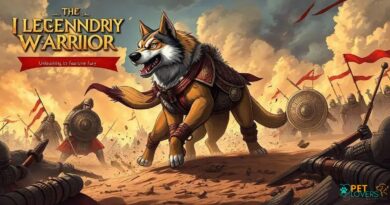What is Object play
Understanding Object Play
Object play refers to a specific type of play behavior exhibited by dogs, where they interact with various objects in their environment. This can include toys, sticks, balls, or even household items. Understanding what object play is can help dog owners provide better stimulation and enrichment for their pets, leading to happier and healthier dogs.
The Importance of Object Play
Engaging in object play is crucial for a dog’s mental and physical well-being. It allows dogs to express their natural instincts, such as chasing, retrieving, and chewing. Object play not only helps in burning off excess energy but also promotes cognitive development as dogs learn to manipulate different objects and understand their properties.
Types of Objects Used in Play
Dogs can play with a wide variety of objects, ranging from commercial dog toys to natural items found outdoors. Common objects include rubber balls, frisbees, ropes, and plush toys. Each type of object can elicit different behaviors and responses from dogs, making it essential for owners to provide a diverse selection of playthings to keep their pets engaged.
How Object Play Benefits Dogs
Object play offers numerous benefits for dogs, including improved coordination, enhanced problem-solving skills, and increased social interaction. When dogs engage in play with objects, they often develop better motor skills and learn how to navigate their environment more effectively. This type of play can also foster a stronger bond between dogs and their owners, as it often involves interactive play sessions.
Encouraging Object Play in Your Dog
To encourage object play, dog owners should introduce a variety of safe and engaging toys. It’s important to observe which objects capture your dog’s interest the most and rotate them regularly to maintain excitement. Additionally, incorporating training commands during play can enhance the experience, making it both fun and educational for your dog.
Safety Considerations for Object Play
While object play is beneficial, safety should always be a priority. Owners should ensure that the objects used for play are non-toxic and appropriate for their dog’s size and chewing habits. Regularly inspecting toys for wear and tear is essential, as damaged toys can pose choking hazards or lead to injuries.
Object Play and Behavioral Training
Object play can be an effective tool in behavioral training. By using toys as rewards during training sessions, owners can motivate their dogs to learn new commands and behaviors. This positive reinforcement approach not only makes training enjoyable but also reinforces the bond between the dog and the owner.
Recognizing Signs of Enjoyment
Dogs will often display clear signs of enjoyment during object play, such as wagging tails, playful barks, and a willingness to engage. Observing these behaviors can help owners understand their dog’s preferences and tailor playtime to maximize enjoyment. Recognizing when a dog is having fun is key to fostering a positive play environment.
Object Play Across Different Breeds
Different dog breeds may exhibit varying preferences and styles of object play. For instance, herding breeds may prefer toys that mimic prey, while retrievers may enjoy fetching games. Understanding these breed-specific tendencies can help owners choose the right objects and play styles that resonate with their dog’s natural instincts.
Conclusion: The Joy of Object Play
Object play is an essential aspect of a dog’s life, providing them with the physical and mental stimulation they need to thrive. By understanding what object play is and how to encourage it, dog owners can create enriching experiences that enhance their pets’ quality of life. Engaging in regular object play not only keeps dogs entertained but also strengthens the bond between them and their human companions.



